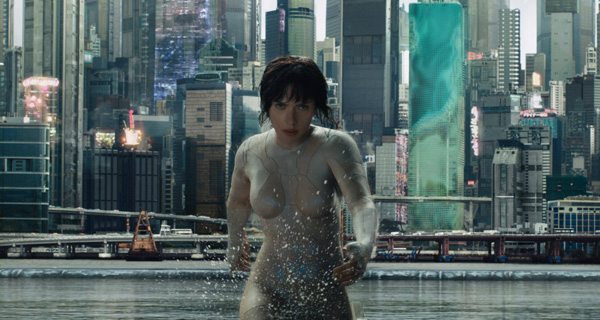American remakes of classic foreign films are typically a bad idea. Now there’s a remake that could dissuade American filmmakers from pursuing such a venture for the remainder of human history.
Mamoru Oshii’s 1995 anime film “Ghost in the Shell” — based on a manga series of the same name — is a masterpiece of Japanese filmmaking and seminal moment in storytelling for the world over. It’s an excellent slice of science fiction with enough technological philosophy to fuel fifty grad school papers. With futuristic aspirations that American audiences didn’t enjoy until “The Matrix” and themes that this hemisphere took years to explore, the original “Ghost in the Shell” was remarkably forward thinking.
But because the world is cruel, director Rupert Sanders and “at least six or seven writers” have made their own “Ghost in the Shell” for lovers of the English language. Not only is it not forward thinking in the slightest, its understanding of the original film is backwards. 2017’s “Ghost in the Shell” is the epitome of dumbed down American filmmaking.
This film is so plagued with issues big and small that there’s no room in this review to focus on the latter. Just know that amidst all the deal breaking problems, there are innumerable moments and stylistic choices that are utterly nonsensical. Despite the controversy, Scarlett’s Johansson character isn’t actually whitewashed — but many other characters are. Her stoic non-performance deserves enough criticism as it is.
Like the original, the plot of “Ghost in the Shell” centers on The Major: an assault team leader made up of a human brain transplanted into a wholly cybernetic body. Though partial cybernetic enhancements are common in this future, The Major is the first of her cyborg kind. She and her task force Section 9 fight cybernetic terrorism on behalf of the government.
The 1995 “Ghost in the Shell” used this world as a jumping off point to delve into questions of existentialism, the nature of humanity and the soul, memories and individuality, the inexorable link between life and mortality, and more. It’s a thoughtful film. The 2017 “Ghost in the Shell” pays little attention to any subjects that would require thought.
The films have reverse processes. The original started exploring its philosophical quandaries straightaway, naturally leading the viewer to the meaning of the metaphors in its title. It then used these metaphors to keep viewers grounded in definitions so that deeper thematic journeys didn’t get too confusing. This remake screams, “The shell is the body! The ghost is the soul!” within the first few lines of dialogue — and repeatedly after that, as if the writers thought everyone might’ve gone to the bathroom during the first five minutes. It then neglects to address questions raised by this scenario.
In the absence of substance, “Ghost in the Shell” spits out a mundane amnesiac story. The Major doesn’t remember anything from before her brain transplant (a narrative decision that rids the film of a need to ponder the original’s most complex ideas), so she chases after her past with the help of a mysterious outsider. It’s a futuristic Bourne tale with bland characters and dialogue that oscillates between cliché and inane.
The movie’s visual luster should’ve been its saving grace, but the fight scenes are mawkish and there are instances of incomplete CGI. At least the city is rendered beautifully enough to make establishing shots the most interesting parts of the movie. Two scenes are visually striking because they’re lifted shot for shot from the original.
The remake’s most heinous crime is misunderstanding a fundamental point of the original. “Ghost in the Shell” takes the original’s driving ideological claim and makes its conclusion the exact opposite. Perhaps this could’ve been a brave counterargument, but the remake doesn’t back up its assertion. There is no argument, only an incorrect interpretation. 2017’s “Ghost in the Shell” is therefore more than bastardization — it is betrayal.
★ (1/5)




